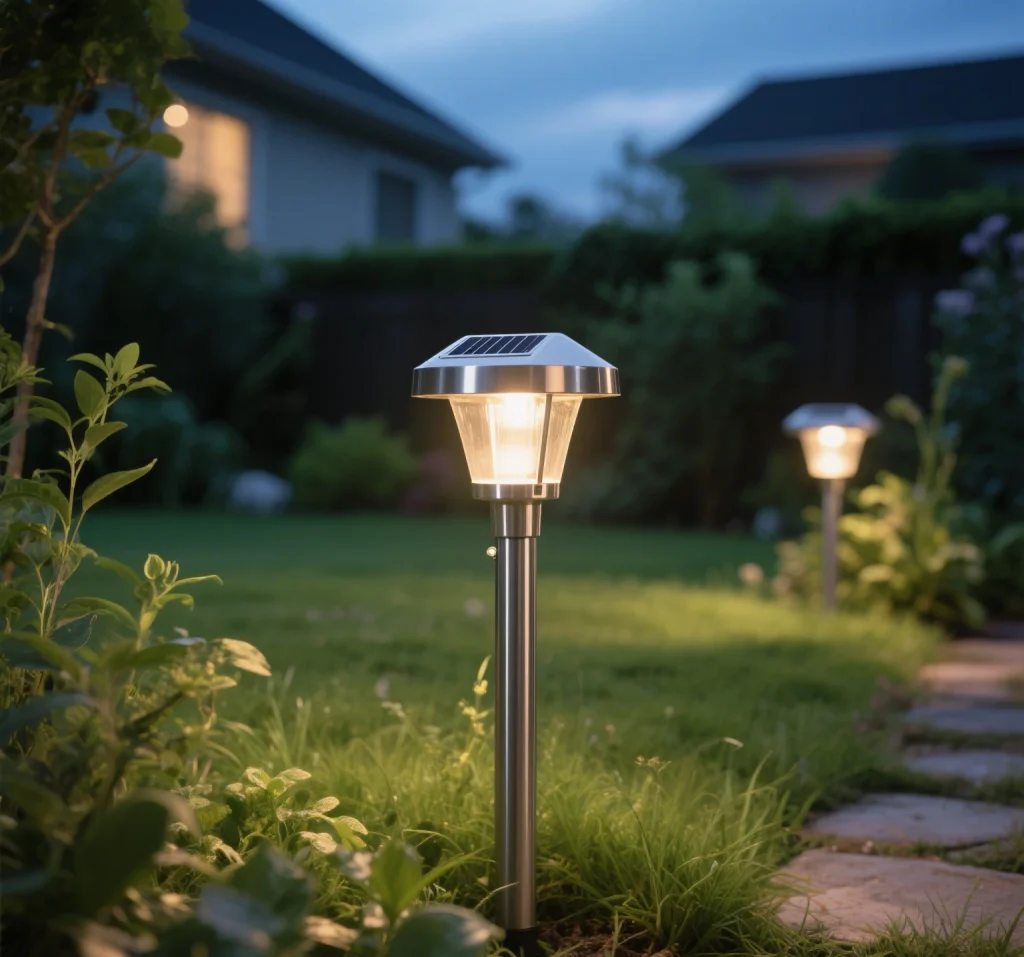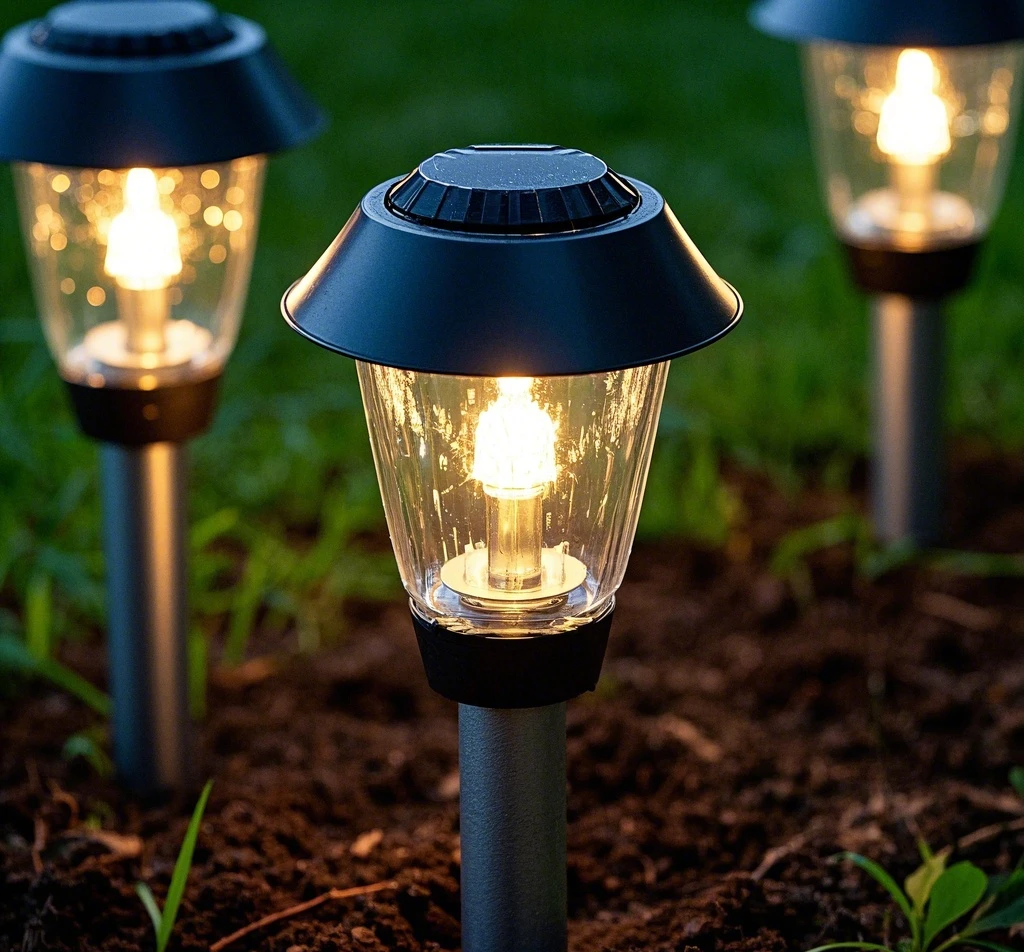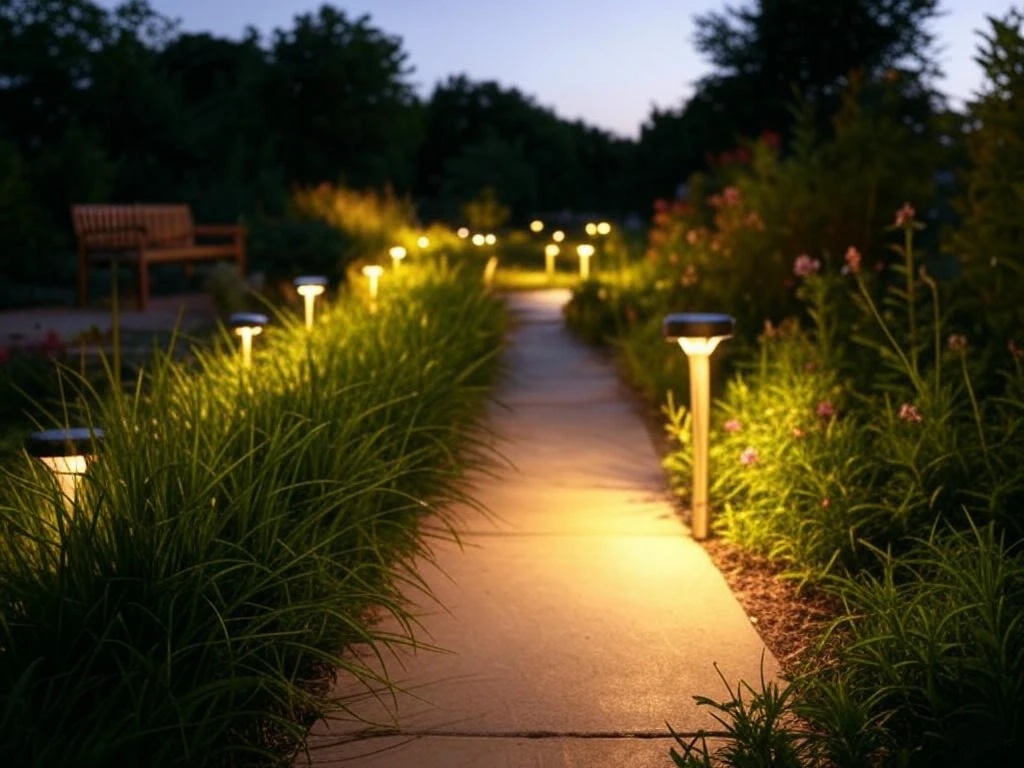Solar lights have become a popular choice for eco-friendly, cost-effective outdoor illumination, brightening everything from gardens to driveways. A key factor in choosing solar-powered lights is their brightness, measured in lumens. But what is the highest lumens for solar lights, and how does it impact their performance? This article explores the lumen ratings of solar outdoor lights, factors affecting brightness, and how to select the brightest options for your needs. Drawing from extensive research and practical insights, we’ll provide a comprehensive guide to help you maximize the potential of high-lumen solar lights.

Understanding Lumens in Solar Lights
Lumens measure the total amount of visible light emitted by a source, making them a critical metric for evaluating solar garden lights. Unlike watts, which measure energy consumption, lumens focus on brightness. For solar-powered outdoor lights, lumen output depends on the LED bulb, battery capacity, and solar panel efficiency. Higher lumens mean brighter light, ideal for applications like solar security lights or solar flood lights, while lower lumens suit decorative purposes like solar pathway lights.
What Is the Highest Lumen Output for Solar Lights?
The highest lumens for solar lights varies by type and purpose. As of 2025, consumer-grade solar outdoor lights typically range from 10 to 5,000 lumens, with some specialized models reaching even higher. Here’s a breakdown of common categories:
- Solar Pathway Lights: These typically produce 10-200 lumens, sufficient for accent lighting along walkways or gardens. For example, standard solar garden lights from brands like Bitpott offer around 50-100 lumens for aesthetic appeal.
- Solar Spotlights: Designed to highlight specific areas, these lights range from 200-800 lumens. High-end models can reach 1,000 lumens, ideal for illuminating trees or statues.
- Solar Flood Lights: Used for broader coverage, solar flood lights often deliver 800-2,000 lumens, with premium models hitting 3,000-5,000 lumens for large areas like driveways or yards.
- Solar Security Lights: These are among the brightest, with some models exceeding 5,000 lumens. Motion-activated solar security lights from reputable brands can provide intense illumination for safety purposes.
Specialized commercial-grade solar street lights can achieve up to 10,000 lumens or more, but these are less common for residential use due to their size and cost. For context, a 60-watt incandescent bulb produces about 800 lumens, so modern high-lumen solar lights can rival traditional lighting in brightness.
Factors Affecting Lumen Output in Solar Lights
Several factors influence the highest lumens for solar lights and their overall performance:
1. Solar Panel Efficiency
The solar panel’s ability to convert sunlight into electricity directly affects brightness. High-efficiency panels, such as monocrystalline panels, capture more energy, enabling solar-powered lights to support brighter LEDs. Larger panels also generate more power, crucial for high-lumen solar lights like solar flood lights.
Solution: Choose lights with monocrystalline panels and check the wattage rating (e.g., 5W or higher for brighter models). Ensure the panel is positioned in direct sunlight for optimal charging.
2. Battery Capacity
The battery stores energy to power the light at night. NiMH batteries for solar lights or lithium-ion batteries with higher milliamp-hour (mAh) ratings support brighter outputs for longer periods. For instance, a 3,000mAh battery can sustain solar security lights with 2,000 lumens for several hours.
Solution: Opt for solar outdoor lights with high-capacity batteries (e.g., 2,000mAh or more) and replace NiMH batteries for solar lights every 1-2 years to maintain performance.
3. LED Quality
The efficiency and quality of the LED bulb determine how effectively it converts stored energy into light. High-quality LEDs produce more lumens per watt, making them essential for high-lumen solar lights.
Solution: Look for lights with LEDs rated at 100-150 lumens per watt. Check product specifications for LED type and avoid low-quality bulbs that dim over time.
4. Weather and Sunlight Exposure
Cloudy days or shaded locations can reduce charging efficiency, limiting the brightness of solar-powered outdoor lights. In low-light conditions, even high-lumen solar lights may underperform if the battery isn’t fully charged.
Solution: Place lights in areas with 6-8 hours of direct sunlight. For regions with frequent cloud cover, consider solar flood lights with larger panels or USB charging options for backup power.

Choosing the Brightest Solar Lights
To find the highest lumens for solar lights that meet your needs, consider the following:
- Purpose: Determine whether you need solar pathway lights for ambiance (50-200 lumens), solar spotlights for focused illumination (200-1,000 lumens), or solar security lights for safety (1,000-5,000+ lumens).
- Brand Quality: Reputable brands like Bitpott or those reviewed by sources like Popular Mechanics offer reliable high-lumen solar lights with durable components. Check customer reviews for real-world performance insights.
- Features: Look for adjustable brightness settings, motion sensors, or detachable solar panels for versatility. Motion-activated solar flood lights can save energy by only reaching peak lumens when triggered.
- Durability: Ensure the lights are weatherproof (IP65 or higher) to withstand rain, snow, or heat, especially for solar street lights or outdoor installations.
Practical Applications of High-Lumen Solar Lights
- Security Lighting: Solar security lights with 2,000-5,000 lumens are ideal for deterring intruders or illuminating large areas like parking lots. Motion sensors enhance efficiency by activating only when needed.
- Garden and Landscape Lighting: Solar spotlights with 500-1,000 lumens can highlight architectural features or plants, creating a stunning nighttime aesthetic.
- Pathway and Walkway Lighting: Solar pathway lights with 50-200 lumens provide safe navigation without overwhelming brightness.
- Commercial Use: Solar street lights with 5,000-10,000 lumens are perfect for public spaces, offering bright, reliable illumination without grid dependency.
Maintenance Tips for Sustaining Brightness
To ensure your high-lumen solar lights maintain their brightness over time, follow these maintenance practices:
- Clean Solar Panels: Wipe panels monthly with a soft, damp cloth to remove dust or debris that reduces charging efficiency.
- Battery Replacement: Replace NiMH batteries for solar lights every 1-2 years to prevent diminished capacity, especially in solar flood lights with high power demands.
- Check Connections: Inspect wiring and components for wear, particularly in solar security lights exposed to harsh weather.
- Seasonal Adjustments: Reposition panels seasonally to capture maximum sunlight, ensuring consistent performance for solar-powered outdoor lights.
Limitations of High-Lumen Solar Lights
While high-lumen solar lights offer impressive brightness, they have limitations. Higher lumen outputs require larger solar panels and batteries, increasing cost and size. Additionally, extremely bright solar street lights may not be suitable for residential areas due to light pollution concerns. Always balance lumen output with practicality and local regulations.
When to Seek Professional Advice
If your solar outdoor lights fail to deliver expected brightness, check for common issues like dirty panels, weak batteries, or poor placement. If problems persist, contact the manufacturer for warranty support or consult a professional for complex installations like solar street lights. Provide purchase details and a description of the issue to expedite resolution.
Conclusion
The highest lumens for solar lights can reach up to 5,000 for consumer models and 10,000 for commercial solar street lights, offering powerful illumination for various applications. By understanding factors like solar panel efficiency, battery capacity, and LED quality, you can choose high-lumen solar lights that meet your needs. Regular maintenance and strategic placement will ensure your solar garden lights, solar flood lights, or solar security lights perform at their best, providing eco-friendly, cost-effective lighting for years to come.

Comments